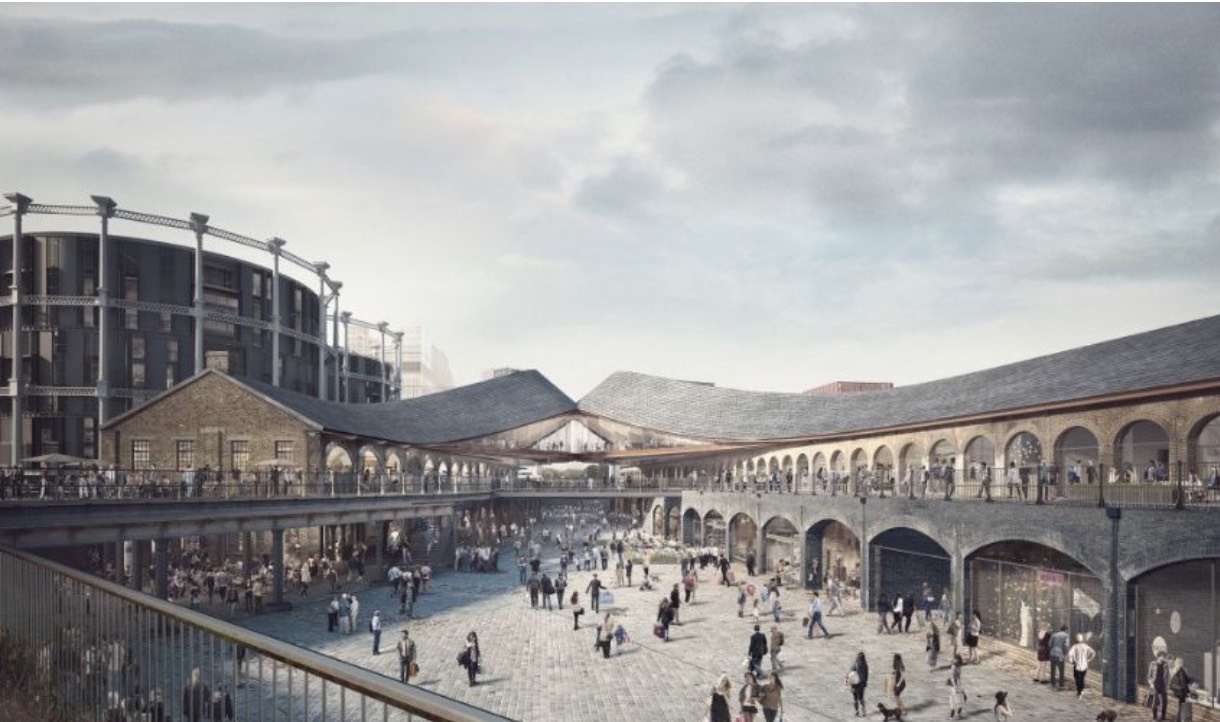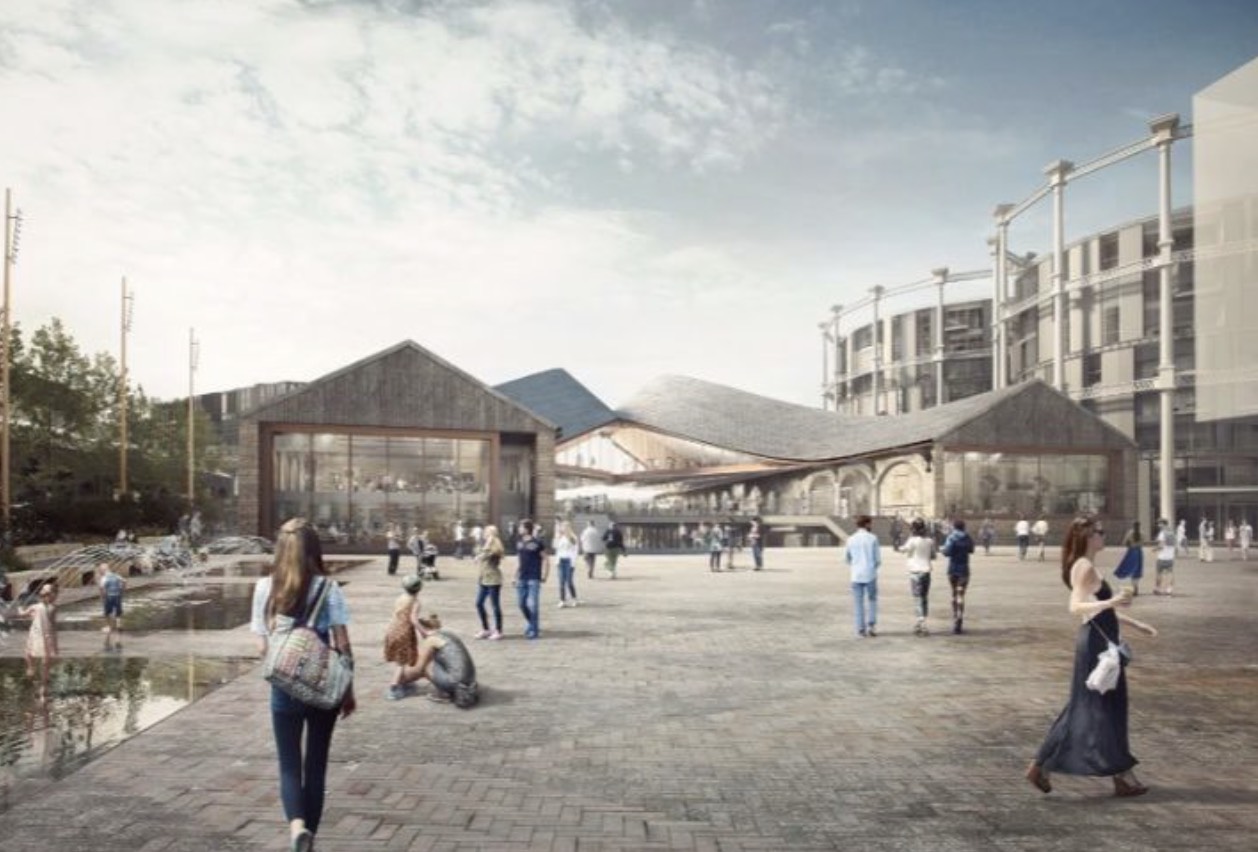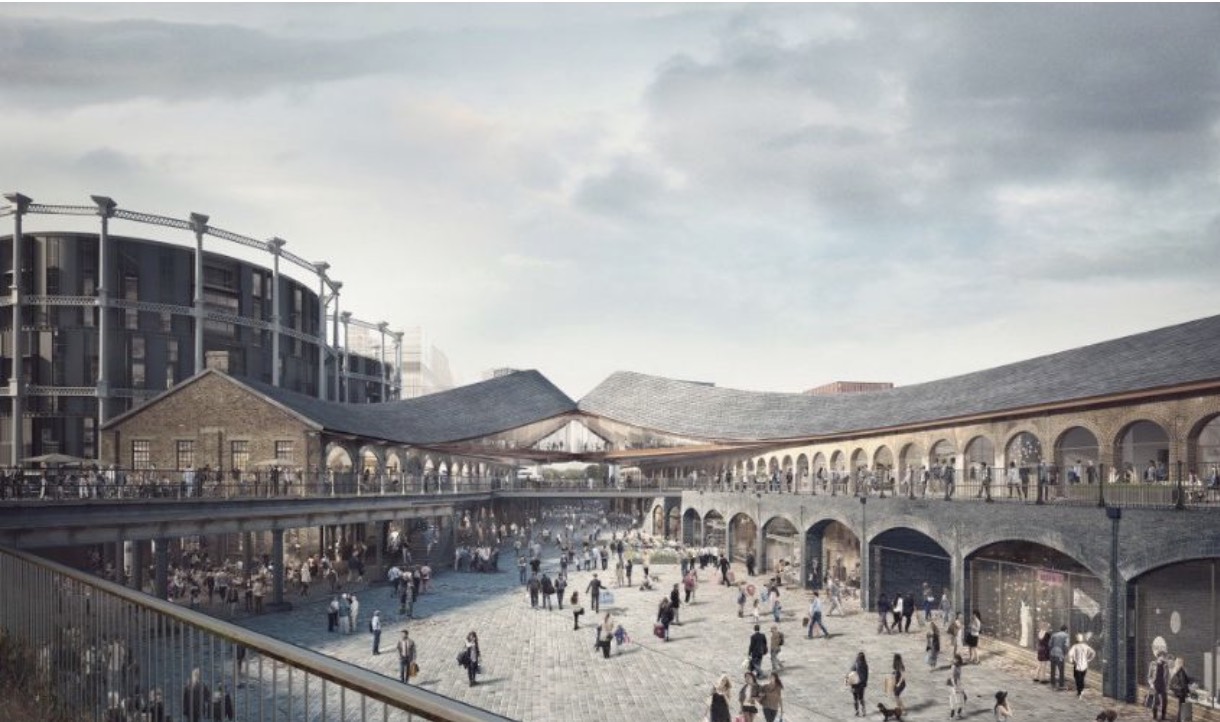In the heart of London, the King's Cross area, a millennium-old city, once stood as a chaotic convergence of train stations and subway lines, embodying disorder and bustling activity. In 1996, the London municipal government proposed an ambitious development plan for King's Cross, aiming to address this state of chaos. However, it wasn't until 2007 that the plan was implemented, involving various institutions and enterprises, including the Central Saint Martins College of Arts and Design and the Google UK headquarters. One shining gem among them was the renovated Coal Drops Yard shopping center, designed by Thomas Heatherwick, renowned for his work on the 2012 London Olympic cauldron and involvement in the design of Google's London headquarters in King's Cross.

From Coal to Commerce: The Remarkable Renaissance of King's Cross and the Rise of Modern Warehouses
Built in the 1850s, Coal Drops Yard was originally two Victorian-era coal warehouses. Through Heatherwick's ingenious design and two years of meticulous renovation, this shopping center has been revitalized, now standing as a globally acclaimed modern shopping destination. The transformation highlighted a profound respect for the original architecture, enhancing connectivity by introducing a steel-structured "sky bridge" that seamlessly integrates with the second-floor plan of the corresponding buildings. This Victorian-era architectural complex not only radiates new vitality but also seamlessly blends into a multifunctional space that harmonizes modern commerce and culture.
From its industrial coal unloading yard origins to its current status as a vibrant commercial hub, the successful transformation of Coal Drops Yard symbolizes the significant metamorphosis of the King's Cross area. No longer merely an industrial site, it has evolved into a versatile space that amalgamates modern commerce, culture, and entertainment. This urban renewal experience holds valuable lessons for the development of many city center train stations and surrounding areas in China and beyond.
By transforming Victorian-era coal warehouses into a world-class shopping center, the King's Cross area showcases the clever fusion of urban development, preserving the unique charm of historical buildings while injecting new vitality into the city center. The turnaround of this coal warehouse serves as a microcosm of urban development, revealing the perfect blend of history and modernity, as well as the harmonious integration of industry and commerce.
Behind the successful revitalization of Coal Drops Yard in the King's Cross area, we witness how Victorian-era coal warehouses have evolved into a world-class shopping destination. In the midst of the innovation wave, modern coal warehouses, with the Air Dome Coal Warehouse standing out as a contemporary architectural star, demonstrate a distinctive allure.
These modernized coal warehouses are no longer mere storage facilities but rather embody a combination of advanced technology and sustainable architectural concepts. The Air Dome Coal Warehouse, as one of its representatives, captures attention with its unique design and efficient functionality.
The successful transformation of Victorian-era coal warehouses into a world-class shopping center in King's Cross area exemplifies the clever integration of urban development. It not only preserves the unique charm of historical buildings but also injects new vitality into the city center. The metamorphosis of these coal warehouses, symbolic of urban development, showcases the perfect fusion of history and modernity, as well as the harmonious blend of industry and commerce.

Behind the successful revitalization of Coal Drops Yard in King's Cross, we witness how Victorian-era coal warehouses have evolved into a world-class shopping destination. In the contemporary era, coal warehouses have embraced innovation, with the Air Dome Coal Warehouse standing out as a star in modern architecture.
Revolutionizing Storage: The Air Dome Coal Warehouse and the Future of Sustainable Architecture
These modern coal warehouses are no longer simple storage facilities but rather a combination of advanced technology and sustainable architectural concepts. The Air Dome Coal Warehouse, as one of its representatives, garners attention for its unique design and efficient functionality.
Firstly, modern Air Dome Coal Warehouses strive for greater transparency in design. Through the use of advanced building materials and technology, the interior of the warehouse is no longer an enclosed space but breaks free from traditional constraints, enhancing natural light and ventilation. The highly transparent air dome allows sunlight to flood the warehouse, creating a bright and spacious environment for stored items.
Secondly, modern coal warehouses have taken solid steps towards sustainability. Utilizing green technologies such as solar power generation and rainwater harvesting systems, these warehouses reduce reliance on traditional energy sources and minimize environmental impact. The design of the Air Dome maximizes the use of natural light, reducing the need for artificial lighting and contributing to energy conservation and environmental protection.
Simultaneously, modern coal warehouses emphasize multifunctionality. They are not just storage facilities for coal but can transform into versatile spaces, such as exhibition centers or cultural venues. The design of the Air Dome bestows more possibilities upon the warehouse, turning it into a comprehensive facility integrating commerce, culture, and technology.
The success of Coal Drops Yard in London's King's Cross area tells us that historical buildings can be rejuvenated through innovative approaches. Modern Air Dome Coal Warehouses, representing contemporary architecture, inherit historical context while daringly embracing innovative heights. This perfect integration not only injects new energy into the city center but also points the way forward for future urban development. This transformation extends to the present day, where we witness modernized coal warehouses, with the Air Dome Coal Warehouse being the most noteworthy. These warehouses are no longer mere storage facilities; they embody advanced technology and sustainable architectural concepts.
Modern Air Dome Coal Warehouses prioritize a design that enhances transparency, allowing sunlight to create a better environment for stored items. Their design emphasizes multifunctionality, extending beyond coal storage to become versatile spaces such as exhibition centers and cultural venues. Simultaneously, to align with the trend of sustainable development, these modern warehouses utilize green technologies like solar power generation and rainwater harvesting, reducing reliance on traditional energy sources and contributing to environmental protection.
Air dome technology is an advanced warehouse covering technique, typically used to protect bulk materials like coal from weather and environmental influences. The air dome covering system creates an airtight membrane at the top of the warehouse, forming a protective gas layer to prevent the intrusion of air, moisture, and other external elements that could affect the stored materials. Here is a general overview of a coal warehouse made using air dome technology:
Key Features of Coal Warehouses Made with Air Dome Technology
Material Selection
Air domes typically use high-strength, weather-resistant polymer film materials, such as polyethylene or polyvinyl chloride. These materials exhibit excellent weather resistance and UV resistance, ensuring long-term protection against environmental corrosion.
Structural Design
The warehouse's top is covered with an inflatable air chamber, and the tension of the air dome is maintained by controlling the pressure of gases inside and outside the chamber. This design ensures that the air dome remains under appropriate tension, effectively covering the entire warehouse.
Automatic Control System
Air dome covering systems are usually equipped with an automatic control system that adjusts in real-time based on current weather and environmental conditions. This allows the system to maintain optimal coverage under different climate conditions.
Airtightness
Air domes exhibit good airtightness, effectively isolating the external environment and preventing harmful substances like rainwater and sand from entering the warehouse, thereby maintaining the quality of the stored coal.
Sustainability and Environmental Protection
Since air dome systems can be opened and closed as needed, they can reduce energy consumption when not in use, enhancing the system's sustainability. Additionally, adopting air dome technology can decrease coal dust emissions, aligning with environmental requirements.
Safety
Air dome systems undergo rigorous engineering design and testing to ensure stable operation under different climatic and meteorological conditions, enhancing the safety of warehouse coverage.










